|
Originally posted on CustomLogoCasesBlog Whether you love it or hate it, business promotion is an essential ingredient of successful entrepreneurship. It’s the key to driving sales, generating leads, and maximizing conversion rates. However critical, though, promotion isn’t known for being cheap. Big corporations are notorious for forking out millions of dollars on social media ads every single month just to keep things ticking over. Not only that, but PR campaigns and expert guidance on promotion can cost a fortune, with no guarantee of success. Thankfully, it’s possible to promote your business both effectively and affordably. There are plenty of ways in which you can market your company without breaking your bank, but before we dive into those, let’s take a look at why promotion is so important. Why Promotion is Important Many startups create a unique product and expect sales to start pouring in as soon as things are off the ground. Alas, most of these businesses fail before long. Sure, you might get lucky and find your product relishing in virality, but the chances are slim. Instead of waiting for that golden moment to strike, promoting your business will ensure that it continues to grow and that new clients keep coming your way even if it doesn’t go viral. The bottom line is that creating a product is only half of the battle. Making sure people actually hear about it is equally as, if not more, critical than producing it. Knowing how to promote your product on low-budget is one thing, but first, you should know how to effectively create a budget to fund your marketing endeavors. How to Budget for Promotion Although we’ll be looking at the best ways to promote your business on a budget in this article, you’re going to need an actual budget in the first place. Creating a pot of money with which to market your company, however, isn’t always an easy feat. Before you start weighing up any figures, you’re going to need to start answering a few important questions to determine exactly how much money you’ll need to fulfill your marketing plan:
Typically, small businesses earning less than $5 million allocate 7-8% of their profit to marketing and brand development (websites, blogs etc.), as well as advertising campaigns and paid social media promotion. Deciding on exactly how much money you intend to spend in order to meet your business goals will ensure that you have a large enough budget to keep everything moving in the right direction, rather than spending blindly and running out of money early. 8 Budget-Friendly Promotional Strategies and How to do Them Once you’ve decided on how you’ll save up enough money to fund your marketing endeavors, you’ll need to decide on how to distribute your budget. Let’s take a look at some of the most effective budget-friendly ideas for business promotion in 2019. 1. Promoting Your Business When You Communicate One powerful and often-ignored promotional avenue is simple communication. Both in-person and online conversations can provide golden opportunities when it comes to improving brand familiarity and reach. How to Promote Using Communication Simply getting used to promoting your business whenever you communicate with people is an incredibly easy and effective way to start spreading the word. Letting people know about your company when they ask what you do for a living may just connect you with your next client. Of course, if you’re planning on promoting your business in person, business cards are your new best friend. Any documents that you hand out should also have a letterhead containing your company’s information, including your business name, logo, contact details and any other relevant details. You should also be mindful that communicative promotion isn’t limited only to face-to-face encounters. Ensuring that all of your emails are signed off with your company name, your position and electronic signature will also help to improve brand familiarity, as will updating your social media biographies with links to your business website. Combining online and offline communication with promotion is an easy and free way to let anybody you speak to know what you do and how you might be able to help them. When they find themselves in need of your product or services, they’ll know where to turn. 2. Social Media Marketing Social media marketing is one of the simplest and most cost-effective promotional methods available. It involves posting regular content about your company and the themes it relates to, aiming to attract an audience likely to be interested in your product or services. How to Promote Your Business Using Social Media Marketing Thankfully, some of the most popular and widely-utilized social media platforms are entirely free. Said platforms are like oceans of people, millions of which might be interested in your business. Promoting your company on social media allows you to start attracting any potential clients to you. Don’t Let Low-Engagement Deter You Many people interested in marketing themselves on social media are put off by low click-through rates. An account with 10,000 followers, for instance, might only have around 1,000 followers that actively engage with the account’s content or buy into that business. While the ratio of followers to conversions may be pretty imbalanced, don’t let that deter you. Social media platforms are some of the most lucrative (and free) places to market your business, providing an enormous return on your investment. Protect Your Brand One of the most critical elements of marketing effectively on social media is branding. It’s imperative that the content you publish aligns with the core message of your company. This will be determined by everything from visual content to writing style and external links. Before you start promoting through social media, you should become really clear about how you want to present your business to its audience. After that, just keep posting several times a day and engaging with other accounts in your niche, ensuring that all content stays true to your brand. Marketing plans and paid promotion can also help to get things off the ground, although these aren’t essential. 3. Blogging and Producing Written Content Many companies have begun to harness the power of the written word in recent years. Whether in the form of blog posts on your business website or guest articles in related publications, content marketing is an easy and effective way to promote any brand. How to Promote Your Business With Written Content There are millions of readers online every single day in search of content that solves their problems. It’s for this very reason that so many companies now have ‘Blog’ sections on their sites, posting on-brand articles on a regular basis. Well-written articles also double up as free advertising. If you’ve just launched a start-up in sustainable energy sources, for example, blog posts about how to make your home more eco-friendly or the benefits of plastic reduction will appeal to many potential customers. Not only that, but writing articles also allows you to tap into an entirely different audience of readers. People that might not even be searching for your product could stumble upon it through your blog posts, becoming a client of yours without even intending to. Knowing where to publish these articles, however, can be tricky. There are so many different options, some of which are listed below with guidance. – Blogs/websites: The most obvious platform onto which you can start publishing articles is your company blog or website. While posting content to your site is never a bad idea, publishing pieces to other spaces within your niche can also help you to market your company. Ideally, you want to to have your piece published to a site that generates a lot of regular traffic, linking back to your company site. Those articles then start to serve as funnels through which internet users search for one thing and find themselves clicking through to your company site, where they may become a paying client. – Magazines: Amidst an ocean of digital publications and content creators, the magazine industry is still, against all odds, alive and kicking. Magazines still serve as excellent tools through which entrepreneurs can promote their businesses, tapping directly into a committed source of niche readers. If you can get your articles published in on-brand magazines that your target market are already actively reading, there’s a strong chance that they’ll be interested in your company. – Newspapers: Printed media is still a great promotional tool, although it is considerably less targeted. Aim for guest posts in niche publications. Contact the business editors at local or even national papers and pitching articles may just land you a valuable feature. Such features can be particularly valuable to geographically-focused businesses targeting potential customers in their local area. 4. Branded Giveaways Whether at trade shows or corporate events, branded giveaways are a classic and timeless form of advertising that doesn’t have to cost a fortune. Providing potential customers and event attendees with products printed with your company name is a sure way to increase brand awareness and familiarity as well as the number of potential leads your company attracts. How to Promote Your Business With Branded Giveaways Handing out genuinely useful items such as iPad cases will provide the people you meet with a practical gift that’s branded with your company name. Even if the people that happen to see your logo don’t convert immediately to paying clients, branded giveaways are great for increasing the familiarity of any business. Take a company like GoDaddy, for example. They don’t expect viewers of their advertisements to immediately open up their laptop and start a website – but when they do find themselves wanting to purchase a domain, they’ll know where to turn. In much the same way, branded giveaways can help to establish that same degree of brand familiarity. If people are already subconsciously aware of your business’s name and services, they’ll know exactly where they need to go when the time comes. 5. Promote Your Business by Delivering Seminars and Presentations In-person promotion is effective for many reasons, allowing potential clients to physically meet company representatives and ask questions. Seminars and presentations are great ways in which your customer base can get to know you personally. How to Promote Your Business With Seminars and Presentations Another fantastic way to promote your business to people passionate about your niche is by delivering seminars and presentations in person. If you’re looking to spread the word about your carbon fiber surfboard startup, for instance, going out to local surf schools and educating them on the benefits of your technology will help to point dedicated surfers in your direction. Presentation attendees not only receive the benefit of useful information on something they care about, but offering discounts and offers on your products at such events will leave people desperate to purchase from you. Even if there’s no direct tie-in to your product, you can still deliver presentations on related topics. In much the same way as blogging on related platforms can help to direct people towards your business, so too will closely-neighboring presentation topics to help send people your way. If public speaking really isn’t your thing, you can start small and work your way up. There are also great sites and groups such as Toastmasters, as well as public speaking groups on Meetup, which can help you to feel more at ease during seminars and presentations. Alternatively, you could hire colleagues or employees to speak on your company’s behalf. 6. Start Making Use of Email Marketing Email marketing is an incredibly powerful and cost-effective promotional tool. It provides predictable results, allows you to use targeted ads without spending much of your budget. Businesses have made use of email marketing opportunities for decades. Although an aged promotional tool, building a strong and passionate emailing list is valuable for a range of different reasons, helping to attract potential customers and drive conversions. How to Promote Your Business With Email Marketing Unlike any other platform, your email subscribers belong to you – you don’t just build a network, you own it. While beneficial in many ways, social media advertisements don’t always reach the full extent of your followers. Facebook has even been reported to only show a small fraction of published content to followers of business pages. Facebook and all other online platforms withhold the right to change things as they please, while your email marketing efforts are entirely under your control. It’s also advisable, and more reliable, if you work to build a strong mailing list rather than buying one from a list broker. The best way to start is to simply begin asking previous and potential clients if you can have their email address to add to your list. To avoid fines and penalties, as well as comply with GDPR policies, you should always ask for permission before you add people to your list. 7. Appear on Talk Shows and Radios Similarly to delivering presentations and seminars to prospective clients, appearing on radio and talk shows is another effective way to market your business to potential clients. How to Promote Your Business on Talk Shows and Radios Local radio shows and interviewing platforms like podcasts are often in search of guests to feature – particularly those providing value to their local community through business. By finding out the names and details of show hosts, you can start getting in touch and booking yourself to speak about your business (or topics pertaining to it) to local listeners. 8. Starting a Business Podcast The podcasting industry has grown enormously in recent years. While podcasts can now serve as businesses in their own right, they’re also an invaluable tool when it comes to promoting an existing company or product.
How to Promote Your Business Using Podcasts Starting a podcast is relatively easy and low-cost, requiring little more than a decent-quality microphone and basic editing software. On your podcast, you could discuss topics that relate to your business and appeal to its target audience, providing free information with the intent of pointing them towards your products and services. Of course, not all listeners will convert into customers, but some will. The more regular streamers you can build, the higher the chances that podcasting will help to boost your company’s reach and, in turn, it’s earnings. Don't Have the Time? Try Sponsoring Other Podcasts As well as promoting your business by launching its own podcast, you can also significantly increase your marketing reach by offering sponsorships to other podcast hosts. Paid sponsors allow large podcasts to earn enough money to sustain themselves and so most will welcome sponsorship from companies looking to promote themselves. You can start promoting yours by getting in touch with podcast hosts that are involved in the same niche as you and offering to pay them to talk a little about your products or services. Final Word on Budget-Friendly Promotion While marketing is notoriously expensive, it doesn’t have to drive your business into debt or bankruptcy. By building a strong promotional plan before you start out, allocating enough money to your marketing efforts and then sticking to the low-budget options listed above, you’ll be able to expand your business’s reach without breaking your bank. Are you particularly interested in any of the promotional tactics discussed above and wants to learn more? Please let us know by commenting below!
0 Comments
Originally published on Vervoe. Good hire or bad hire? You’ve done the hard work, you’ve made the decision and your shiny new hire has finally joined the team. Great, now what? So much is written about how to hire great people and what to look for when hiring. But that is merely the start of the journey. After the hiring decision is made, the work begins. Your team has grown and, at some stage, you’ll need to decide whether the person you recently hired is adding value. If not, it might be time to make some hard decisions, or even revisit your hiring methods. Here are five powerful indicators that you’ve made the right choice. 1. Dedication “Things may come to those who wait, but only the things left by those who hustle.” – Abraham Lincoln There is a lot of talk about hustling in the startup community. It’s a badge of honor. But hustling is not a skill, it’s a behavior. It is therefore a choice. Every startup hopes its team members will make that choice every day. You can encourage hustling by communicating your company’s vision and values, as well as creating a collaborative and fun work environment. Without those things, even the best hustler may run out of steam. When people buy into your company’s vision, they are more likely to become dedicated to your team. A dedicated team member is an excellent outcome, but it takes both sides to make that happen. Making the right hiring decision isn’t just about hiring someone who is great in isolation. Rather, it’s about hiring someone who is great for your team. In other words, a great hire is someone who will eventually become dedicated to your team. Dedication looks pretty much like hustling, but it’s sustainable. So look for sustained and purposeful effort. It’s a good indicator of both performance and engagement. 2. Initiative “Initiative is doing the right things without being told.” – Elbert Hubbard Having people who can do things well without being told is a gift. In his article, One Behavior Separates The Successful From The Average, Benjamin P. Hardy describes people who take initiative as follows: “They don’t need to be managed in all things. They don’t just do the job, they do it right and complete. They also influence the direction for how certain ideas and projects go.” But it’s not enough to just do things well. After all, that’s what is expected. It’s about doing the right things well. Knowing how to prioritize requires good judgment. Initiative coupled with bad judgment can be counterproductive. When people take initiative, productivity increases and the confidence goes up. Team members know they can rely on each other to get things done. 3. Cultural Stretch “Knowledge will give you power, but character respect.” – Bruce Lee In his article, Hire for Cultural Fitness, Not Just Cultural Fit, Gustavo Razzetti argues that good hires should make the culture stretch, not just adapt to it. That’s a great perspective. When new hires form independent relationships with other team members, and impact them in a positive way, you can be sure that your culture is stretching. It’s evidence that they are adding something, not just assimilating. It’s a beautiful thing to see the team growing. Not just in numbers, but in intellectual firepower and curiosity. Any new hire that makes a contribution to the team’s growth is a leader in the making, if not a leader today. 4. Improvement “We are all born ignorant, but one must work hard to remain stupid.” – Benjamin Franklin There is always room for improvement, no matter who you are. It’s a wonderful feeling to see people improve over time and, for high performers, improvement is not an option, it’s an irresistible desire. In his article, 76% of high-performance employees say trade mastery, not money, most important in career decisions, William Belk argues that “corporate culture and directive”should encourage team members to develop their skills in the pursuit of mastery. This will result in high levels of engagement and sustained innovation. Improvement is therefore a strong indicator of performance. Assuming people are set up for success, strong team members will look for opportunities to hone their craft. An ethos of continuous improvement needs to be encouraged and, sometimes, leaders may even need to get out of the way to give the team space. People with a capacity and willingness to improve their skills become more valuable over time. Rather than having their careers developed for them, people who aim for continuous improvement create opportunities for themselves. For companies who believe in empowering their teams, constantly-improving team members are obvious assets. 5. Surprise “Surprise is the greatest gift which life can grant us.” – Boris Pasternak Trying to hire people who will surprise us is a contradiction in terms. We hire people to perform certain tasks and we expect them to perform those tasks very well. High performers may exceed our expectations in the quality of their work, but that’s not what I’m referring to here. Every so often, people do things that catch us off guard. These acts of wonder cannot be found in a job description, they require skills that we don’t necessarily associate with the person who surprised us, and they are not things we would have thought to do ourselves. It’s something intangible, and there is no point looking for it. But when it happens, we know that we have someone special on our hands. We got more than we bargained for.
Then, You Know It’s Real “To be natural is such a very difficult pose to keep up.” – Oscar Wilde When I reflect on the five indicators of a sound hiring decision – dedication, initiative, cultural stretch, improvement and surprise – what stands out is just how human they are. They are, more or less, what Seth Godin would call “real skills”. That doesn’t mean that technical skills, which Godin calls “functional skills”, aren’t valuable. Of course they are. They are the baseline, the minimum standard. But it’s the “real skills” that make a new hire stand out. They influence how the work is done, the impact on the rest of the team and the propensity for growth. When the time comes to assess a hiring decision, it is helpful to look beyond how individual tasks are performed and see each new hire through through a “real skills” lens. In addition to an assessment of performance right now, you’ll get a strong indication of what you’re likely to see in the future.
Editor's Note: This is a collaboration piece with Emily Bartels from Constant Clicks. Whether you’re new to business or a seasoned entrepreneur, outsourcing marketing activities is a great way to increase your capacity and improve your project execution. But what are the most effective ways to outsource? What resources should be outsourced, and what should be done by you? Read on to find out the top marketing activities to outsource. 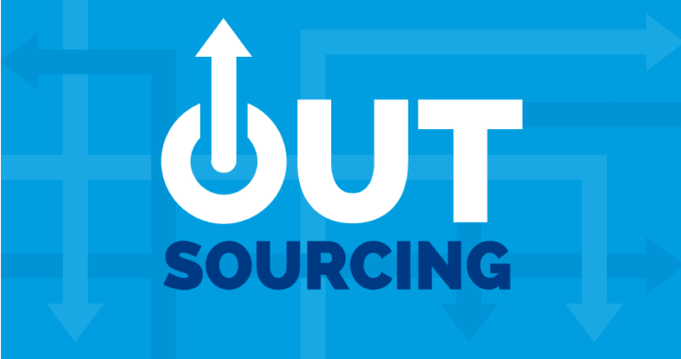 Designing Logos Your logo appears on everything that your company puts out, so if you don’t have a professional designer, you should definitely outsource to a marketing agency to find one that best fits you. A skilled designer will have a better eye for this rather than, say, relying on someone who has never done it. Logos mean a lot since they’re an integral part of the public's perceptions of your company. Being able to have your brand value aptly communicated in your logo is essential, and it’s a marketing activity that should definitely be outsourced to the right people. That is to say, don’t just give it to a friend simply because they have a graphic design degree; go to a marketing professional. Creating Images Creating images takes a long time, about thirty or so minutes (longer if it's your first time). That's a lot of time to be used on just one task, and if you’re the one running an entire company, that certainly is a waste of resources. If you want pretty images for your business, consider outsourcing this task to save on effort and time. Plus, with the right designer, you’ll get the quality content you need to engage your audiences. Assets for the Brand This means any business cards, printed materials, whitepapers, and sales/marketing items with your business name slathered on it. A professional designer will make sure that everything carries continuity while looking beautiful and polished. You’ll want to make sure that you hire the right kind of freelancer. If you want the project done, and you want it done right, you’ll want someone that is trustworthy. Ask for referrals, read reviews, and check their portfolio of previous works. When it comes to brand design, don't hire different people for different projects as that may disrupt continuity. Instead, hire a singular designer or an agency that is an expert in the field and can handle anything related to design. Curating Social Media Content Curating social media is an important but time-consuming task for any content marketing strategy, but you shouldn’t have to be the one to do it. You should be spending time running and growing your business. Have the outsourced party work on this. Give them clear instructions on the style and format of your content and then let them have it. That way, you’ve got someone growing the social media aspects without you having to devote hours in a week online. Replying to Comments If you're on social (as your should be) or run any type of blog, you’re going to realize that replying to comments takes time. If you can, delegate this task to someone else. Whether it’s an assistant or a 3rd party, let them handle it. Even if it’s the mundane task of writing “thanks” to a bunch of different comments, it'll take about 15-30 minutes a day to reply to each comment if you're running multiple blogs plus social media and a couple online review sites. Multiply that by 365 days in a year, and you'll end up with 5,475 minutes a year, or 11.4 days based on 8-hour days. That's a full week's time spent on typing "thanks" on the reply line. Website Design While there are free DIY platforms such as Weebly and Wix, they tend to be generic and require some time to explore. As a business, and especially if you're hoping to generate business leads on the website, you'll want an interface that's professional, polished, and optimized for mobile. Therefore, regardless of which platform you choose to host your website, you want to hire an experienced website designer who is familiar with your industry to ensure that the website is functional, easy to navigate, and aesthetically appealing. A skilled website designer can create a customized look and make sure everything works as intended. If you're thinking of selling products online, then you should definitely put your money into designers who know exactly what they’re doing. SEO Work Search engine optimization is somewhat of a mystery with multiple trials and errors for a lot of people. This whole process, which includes countless hours of keyword research and tracking results, is rather lengthy. Make life easier for yourself and go to an expert for help. SEO optimization, if done right, has a huge impact on the business and will save you so many hours. SEO experts will find the right keywords and phrases to help more potential clients locate you on the google search, and give you the content you need to get people to flock to your site. And it doesn't stop there. Relevant directories effectively help with NAP citations. However, directory submission takes time and involves lots of forms. If you don’t want to handle all the paperwork, outsource it. Guest Blogging The concept of guest blogging is simple: You write a blog article according to the requirements of a particular blogger and get a backlink in return. Since links are a primary ranking factor in Google, and guest blogging offers a strong opportunity to secure a link back from another website, guest blogging is a commonly used tactic for SEO. Additionally, guest blogging establishes a relationship with the blogger hosting your post and taps into their audience for additional exposure. This, in turn, not only increases your web traffic but also helps you establish authority among an audience. Many marketing agencies offer ghost writing services to help you generate quality content and send them out to influential blogs in your industry. They will also help you manage your relationships with other blogs for future partnerships. Conclusion Outsourcing is often seen with a downcast eye because people have had bad experiences with outsourcing and many small business owners want to save money by doing everything themselves. However, if you outsource the right projects to the right people, you’ll not only save money and time but also get great results. The level of execution on your marketing projects can make a huge difference for your company. That's why outsourcing the tedious details of running a company’s marketing campaign, including design works, website, content generation, social media management and SEO are considered the best components to outsource to the experts. About the Guest Author:Emily Bartels is a Content Writer and Developer at Constant Clicks that helps businesses to grow using digital marketing practices. She has been in this industry for 5+ years and specialises in writing educative content on SEO, Social Media, businesses. She loves to read trending news to keep her updated!
Whether you’re starting a new business or running an established organization, one of the major dilemmas your team needs to answer is determining the appropriate budget for marketing. After all, you don’t want to invest heavily in developing a hip, niche product, only to end up with a fantastic product in your hands without the go-to market plan and promotional materials to drive awareness and sales.
In the mid-90s, Steve Jobs took Apple Inc. (which was on the brink of extinction) and turned it into one of the most valuable brands in the world. Jobs understood that a strong brand and marketing strategy is a powerful asset and a vital role in the success of any business, and Apple is one of many successful companies that spends more on marketing and sales than they do on research and development. However, unlike Apple and other global corporations, many small businesses struggle to balance between spending on marketing versus other operations because they have limited resources and capacity. This is why it is important to take time to evaluate your marketing objectives and prioritize specific marketing projects. Below, we will break down the marketing budget and discuss where to allocate your resources to optimize your marketing plan. Before You Start Refer to your marketing plan, if available. There are a few questions that you need to answer before you begin to set your marketing budget.
1. The random allocation approach—Possibly the most common method. Businesses that use this method follow no marketing strategy or plan. Budget is allocated based on impromptu efforts: “We need more sales; let’s have a campaign!”. 2. Keeping up with the Jones approach—Matching what the competitors are spending or reacting to a competitor’s increase in marketing efforts. Keep in mind that it is very difficult to establish what competitors are spending or how efficiently their budgets are being used. 3. The last year’s budget approach—Many organized businesses look at previous budgets and make upward or downward adjustments based on their evaluations. 4. The percentage of turnover approach—Organizations that use this method strive to establish an accepted marketing spend based on percentage of turnover (sum of money that the organization has collected from its normal business practices such as sale of goods and services). The generally accepted spend for a business in a steady state is 5%-8% of turnover, higher for new businesses or if there is a need to open a new market. Note: If there are major changes in strategy, do not base your budget on previous budgets as those are likely to be irrelevant. 5. The task orientated approach—This method involves looking at the strategy and tallying up the costs of all planned marketing activities to arrive at the marketing budget. This may create a figure that you are not comfortable with, but it is the most strategic method. 6. The hybrid approach—Many businesses will incorporate several of these methods to come up with a realistic and flexible marketing budget that matches strategy with affordability. Other Considerations… Aside from selecting the appropriate budgeting approach, you also need to think about what you’re really investing in. Remember that advertising, trade shows, social media, mobile apps, etc. are only tools to help you gain and retain customers. Thus, your first consideration should be “how much is a customer worth?” The most straightforward way to calculate customer lifetime value (CLV) is to subtract the revenue you earn from a customer by the money spent on acquiring and serving that customer, where the total revenue you can expect to get from each customer is your average order value divided by one minus the repeat purchase rate. An example: Let's say that the value of an average order at your restaurant is $35. Also, anytime someone makes an order there is a 15% chance of the customer m coming back and making a repeat purchase. Finally, let's assume that it costs you $10 to acquire each new customer. (Figures are purely assumptions for demonstration purposes.) CLV = [$35 / (1 - 0.15)] - $10 = $31.17 Your second consideration should be “what is the average conversion rate from inquiry to customer?” Conversion rates (CR) are calculated by dividing the number of conversions by the number of total impressions, multiply by 100. An example: your site had 2,000 visitors last month and produced 125 sales. (Figures are purely assumptions for demonstration purposes.) CR = 15/2,000 x 100 = 6.25% The point is that a marketing budget should not be perceived as an expense towards a single, immediate sale; rather, it is an investment in making and keeping a customer for the long-term. Industry Standards By this point, you’re probably still wondering what other organizations are spending on marketing, just to gain a point of reference. The answer is: It varies by industry. Below are some figures gathered in a 2017 CMO survey published by the American Marketing Association. Percent of revenue by industry:
Where to Spend Using the SBA recommendation as a reference point, you may want to consider setting a 5% of revenue marketing budget for your regular marketing activities, with added spending on periods that require extra marketing efforts to meet changes in strategy or to upgrade/enhance your marketing foundation. In general, your marketing foundation should include:
Essentially, your marketing foundations consist of establishing your brand, defining your missions and values, and building your basic communication platforms. Efforts toward building and maintaining your marketing foundations fall under brand development. You may also use budgeting approaches 3, 4, or 5 to determine the appropriate amount for your marketing foundations. Depending on your industry, you may need to invest more in promotional campaigns during certain seasons or years to capitalized on additional traffic. Or, you may simply want to run a couple spontaneous campaigns to temporarily boost your sales. This is where you can tap into the remain 2-3 percent of your marketing budget, or implement budgeting approach 1 or 2 to meet your marketing needs. Separating your marketing budget into brand development and promotional campaigns helps you maintain a degree of flexibility and bridge strategy with affordability. |
|||||||
© COPYRIGHT 2019. ALL RIGHTS RESERVED.



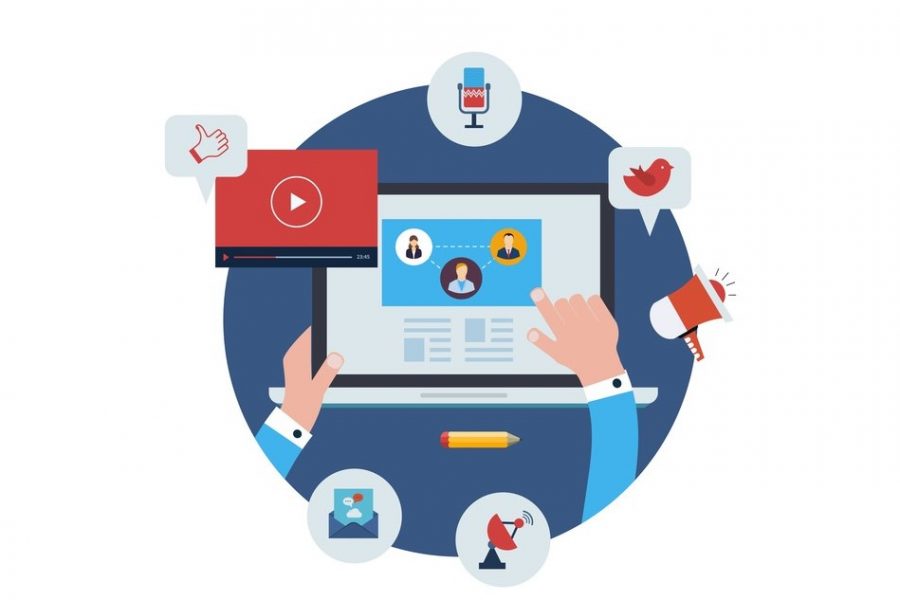



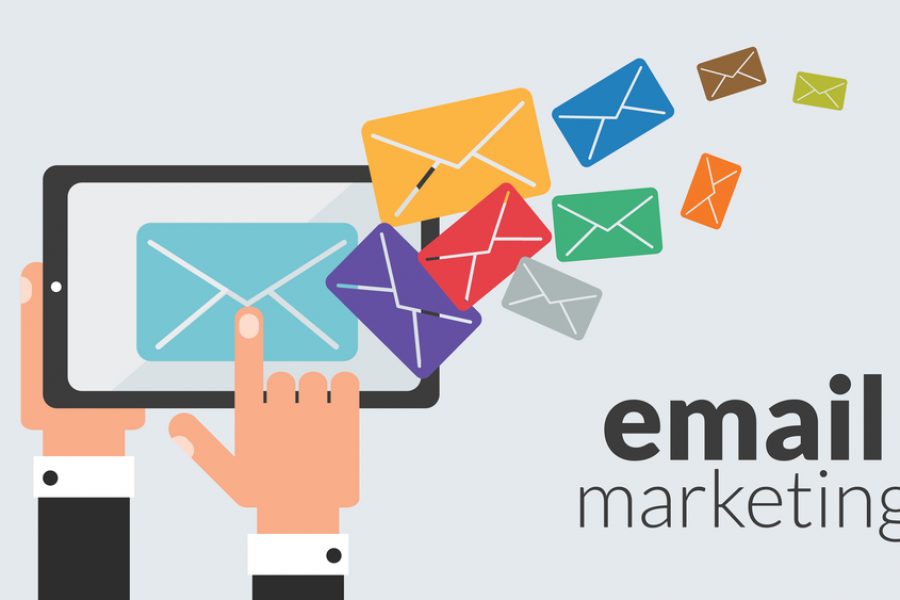








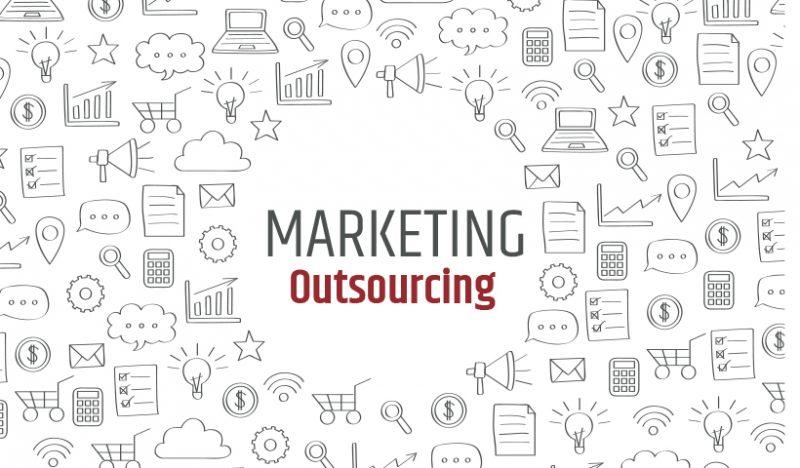

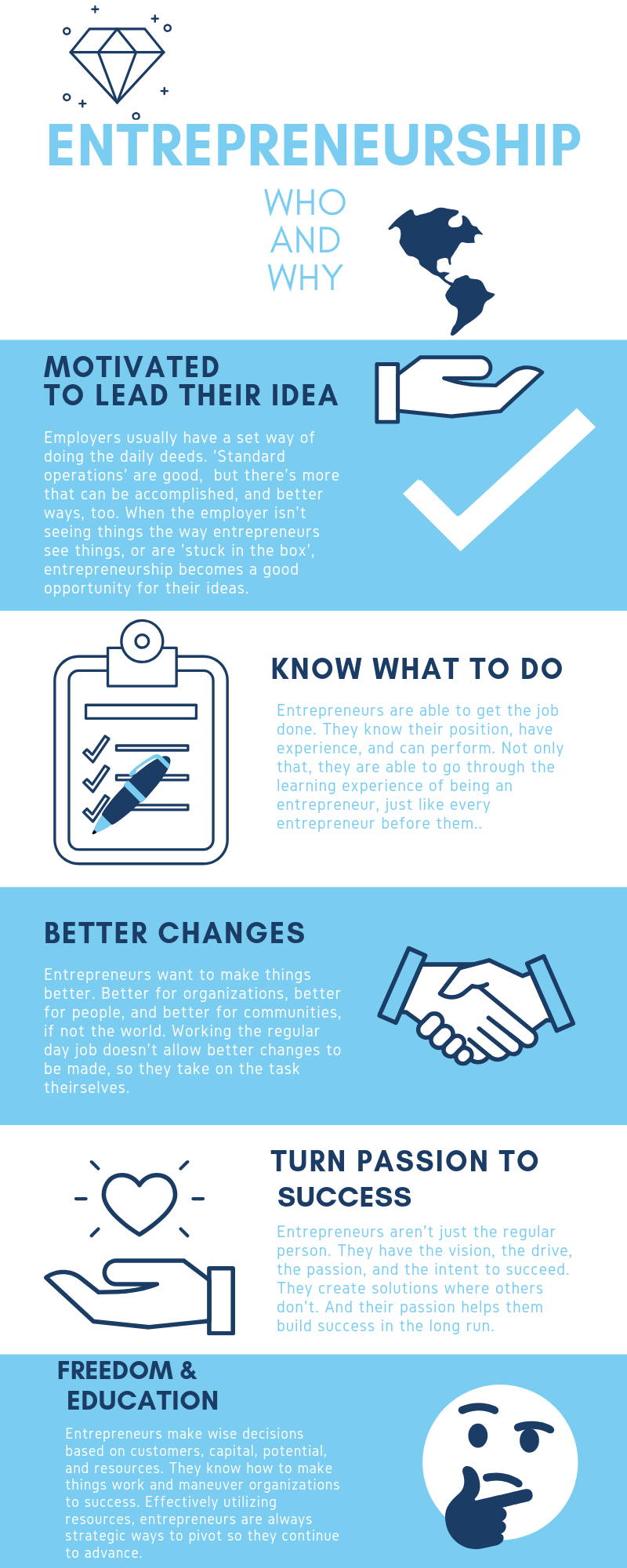

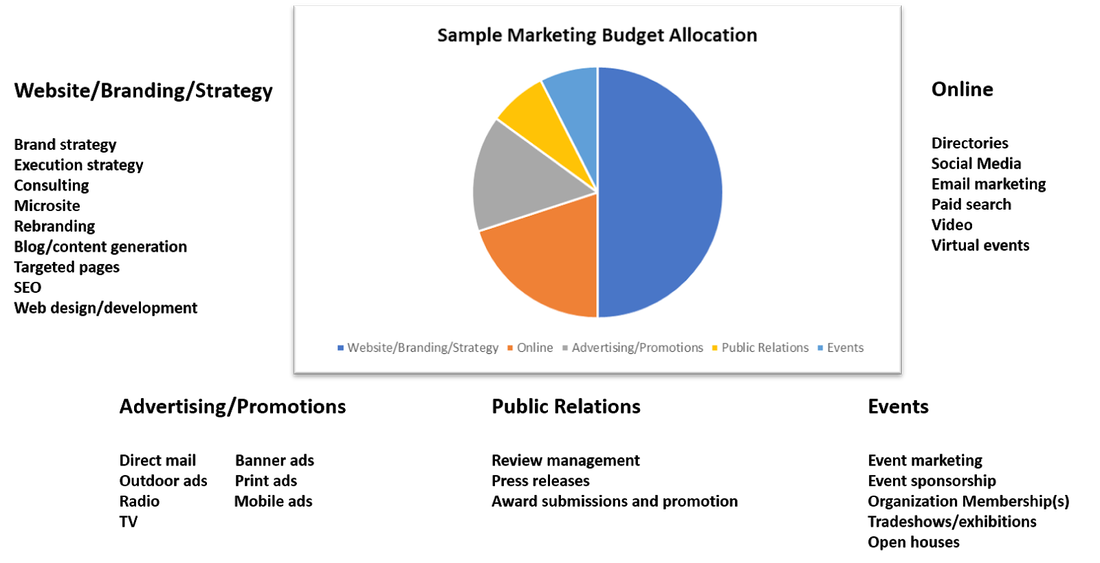
 RSS Feed
RSS Feed